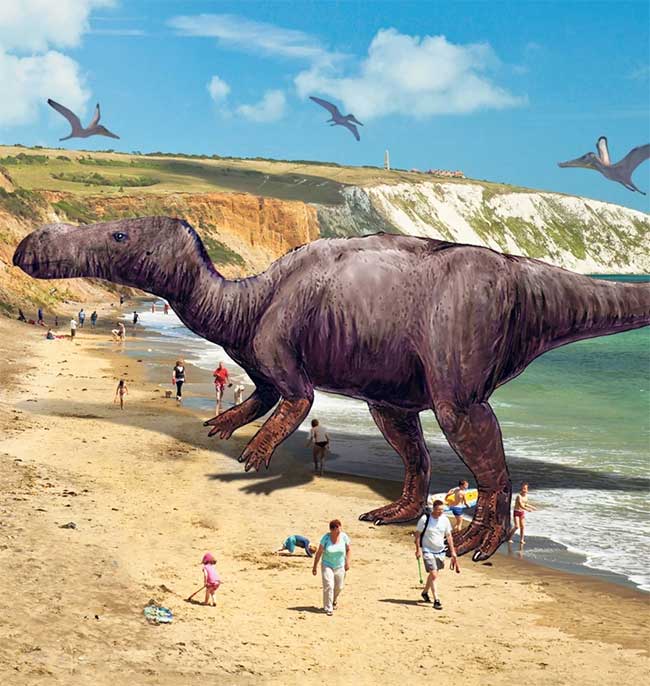A new study reports that scientists have discovered a new dinosaur species after its bones were excavated. This dinosaur has been named Brighstoneus simmondsi.
This dinosaur is believed to have existed during the early Cretaceous period, approximately 125 million years ago. The genus Brighstoneous is named after Brighstone, a town in England near the excavation site. Simmondsi honors Mr. Keith Simmonds, the individual who found the specimens.

Brighstoneus has a round snout and more teeth.
Archaeologist Simmonds discovered the bones of this reptile in 1978 on the Isle of Wight, an island off the southern coast of England. The specimens are housed in the Dinosaur Isle Museum in Sandown on the Isle of Wight. More than 40 years later, they were examined in a new study.
The study’s author, Jeremy Lockwood, a researcher at the Natural History Museum in London and the University of Portsmouth in the UK, noted: “Today, discovering new dinosaur species in museums rather than in the field is quite common.”
The research on Brighstoneus simmondsi was published in the Journal of Systematic Palaeontology. At that time, Lockwood was conducting research on the diversity of large herbivorous dinosaurs, including Iguanodon and Mantellisaurus atherfieldensis.
To date, these are the most commonly found dinosaur fossils on the island. After thoroughly examining the bone fragments, researcher Lockwood identified a new dinosaur species.
Specifically, both Iguanodon and Mantellisaurus have straight, flat snouts. In contrast, Brighstoneus features a round snout. According to Lockwood, to facilitate chewing, Brighstoneus also possesses more teeth.
“During the early Cretaceous period, grass and flowering plants were not common. Therefore, this dinosaur may have had to eat tough vegetation like conifer leaves and ferns,” the expert explained.
Based on the thigh bone of the fossil, scientists estimate that the discovered dinosaur was about 8 meters long and weighed approximately 2,200 pounds (1,000 kg). Thanks to this discovery, scientists determined that all the thin bones found on the island belonged to the species Mantellisaurus, while the larger bones were classified as belonging to Iguanodon.
“Brighstoneus shows that there is greater diversity among Cretaceous dinosaurs,” Lockwood remarked.
Additionally, the Brighstoneus specimens were found to be 4 million years older than the Mantellisaurus bones. Matthew McCurry, the curator of paleontology at the Australian Museum in Sydney and a senior lecturer at the University of New South Wales, who was not involved in the study, stated that some features of the bones, such as the jawbone, are unique to Brighstoneus. The longer jaw could accommodate 28 teeth, more than a few compared to any other closely related dinosaur species.
Researcher Lockwood expressed interest in studying whether the diversity of dinosaurs fluctuated or remained stable over a million years. Meanwhile, McCurry commented that dinosaur bones could also reveal how Earth looked millions of years ago, “Describing new dinosaur species is the first step in piecing together what these past ecosystems looked like and understanding how they changed over time,” McCurry shared.

















































